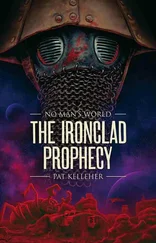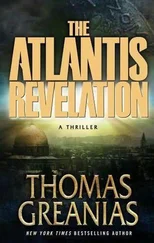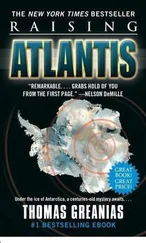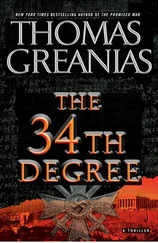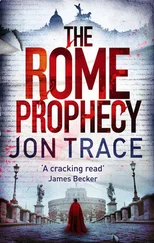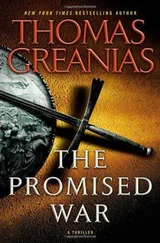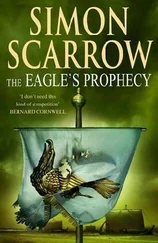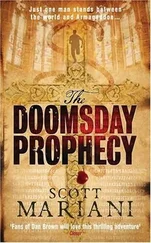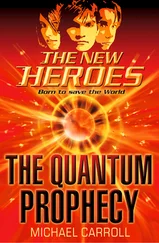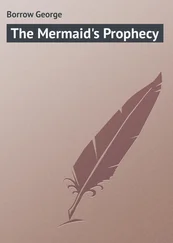According to the report McConnell had e-mailed her, Conrad insisted that this bland portrait contained a great secret, one that Washington needed to get just right to preserve for centuries. And Conrad had demonstrated a simple test at the abbey to prove to the monks that the firm hand of George Washington was behind Savage's seemingly slapdash composition.
Repeating Conrad's experiment, she laid the picture flat on her tray table and with a marker drew two diagonal lines across opposite corners-one giant "X." Smack dab in the center of the portrait where the lines intersected was Washington's left hand resting on the L'Enfant map.
The controlling hand of George Washington.
This "secret geometry," Conrad argued, was a sure sign that Washington wanted to show that nothing about this portrait was left to chance. Rather, he was communicating an important message.
And she had to agree.
Conrad Yeats, you clever wanker.
The question, of course, was what that message could be. And clever as Conrad was, she knew he would never guess that "the fate of the world" Washington referred to in his letter to Stargazer was the location of the mysterious globe that America's first president had buried somewhere under his eponymous capital city.
Or would he? She had underestimated Conrad before only to regret it later.
Impossible, she concluded. Not without knowledge of the L'Enfant confession. Which she possessed and Conrad did not.
Using Conrad's experiment with Washington's left hand as a clue, she decided to take a fresh look at the portrait and what he was doing with his right hand. It was resting on the shoulder of his adopted grandson, a symbol of the next generation, who in turn rested his hand on the globe.
Just as interesting was what the boy was holding in his hand: a pair of compasses, Masonic symbols of the sacred triangle. It was as if he was about to measure something on the L'Enfant map.
An unbroken chain from the globe to the map, she marveled, with nobody to witness it save for the black servant.
Truly, Washington intended this portrait to work with the original L'Enfant map to lead Stargazer to the final resting place of the celestial globe.
All of which made Serena wonder about the more important question that Cardinal Tucci had warned her neither she nor Conrad should ever try to answer:
What was inside the globe?
***
Serena stepped off the plane at the Montauk airstrip to find a sober McConnell waiting for her with a black Mercedes. Dressed in a dark business suit, he stood coolly in the late June heat and opened a door for her.
Serena rode in the back of the town car with McConnell while Benito drove them through the pristine woods and moorlands. The land had once belonged to the Montauk Indians until the federal government of the United States took it a century ago and built a now-abandoned military installation. All that was left of the base now were the ruins of an old, enormous SAGE radar dish and the airstrip. Private jets owned by wealthy men like McConnell could land without much attention.
"So how is our friend Dr. Yeats?" she asked.
"Popular."
He handed her a printout of an FBI alert to various law enforcement agencies about Conrad's exploits last week. "They're not accusing him of anything. He's only 'a person of interest' at this point. Meaning they don't want any cop shooting him, or even letting his name leak to the press. They just want their eyeballs peeled in case he pops back up on the grid."
She looked at the picture of Conrad the FBI used. Somehow his face always came out looking far more menacing in photos than in person.
"Well, I can't wait to see him as a monk."
"I'm afraid he won't give you that satisfaction. In the process of deciphering the letter to Stargazer, Dr. Yeats cracked the meaning of 763."
Serena felt a pit in her stomach. "Please tell me he's still at the abbey, Father."
"I'm sorry." McConnell shook his head.
Serena stared at him. "You let him disappear on us?"
It was bad enough that Conrad probably suspected she had known about the Savage painting all along, which wasn't true, and that he couldn't trust her, which unfortunately, thanks to Cardinal Tucci, was true: her counter-mission was to let Conrad figure out the location of Washington's globe but take it herself back to Rome. It was the only way to protect him from the Alignment, she rationalized, even at the risk of him hating her forever.
"You know our mission statement requires that we can't keep anyone against his will, Sister Serghetti. But Dr. Yeats has little incentive to flee far from the only sanctuary he has right now. And a plainclothes security detail is following him."
She held up the FBI alert. "Others might be, too."
"Don't worry. Dr. Yeats is in disguise."
"Disguise?"
"You'll need one, too," he said. "It's in the bag on the floor."
Serena looked down at the black bag and pulled out a white bonnet, blue blouse, and white puffy skirt. She couldn't hide her reaction at this reversal and knew she would have to confess it later.
"And just where in bloody hell did Conrad go?"
HEADQUARTERS
NEWBURGH
DRESSED IN BOOTS, britches, and a blue Continental Army coat, Yeats circled the large 25-foot-tall obelisk. It was made of fieldstone, like the Washington Monument, and built more than a hundred years ago by the Masons of Newburgh, New York, to commemorate Washington's greatest yet least known military victory.
For it was here at Newburgh and not at Yorktown that the last battle of the American Revolution took place. On this very spot Washington was offered the chance to be America's first king by his officers. But Washington refused the crown, which he considered anathema to the cause of liberty to which he and his soldiers had dedicated themselves. His officers then attempted America's first and only military coup.
Washington quelled the coup at the eleventh hour by appealing to their better instincts with a speech that came to be known as the Newburgh Address. Moved to tears, his officers reaffirmed their support for their commander-in-chief.
It was the Revolution's darkest hour and Washington's greatest victory.
At least that's what the history books say.
Today, this last encampment of the Continental Army is known as the New Windsor Cantonment State Historic Site, a state park just off the New York Thruway. Here interpreters in period dress reenact military exercises and show what everyday life was like for the camp's 7,000 troops and 500 women and children. Nobody on the staff at the visitors center gave much thought to the lone "cast member" wandering about the 1,600-acre enclave and winding up in front of the obelisk memorial.
Except maybe one. A ruddy, middle-aged man dressed as a Redcoat had given Conrad a funny look inside the gracious Edmonston House when he asked for records of names of those who may have visited Washington at the encampment. There were none officially, but Conrad was allowed to peruse a few journals of the day kept by members of the military. It took hours, but he finally found an entry dated March 15, 1783, which mentioned Washington had a visitor, Robert Yates, in his base home shortly before addressing his mutinous troops.
But there was nothing about the nature of the visit that Conrad could find.
Now he stood outside, bending over to examine the inscription on the obelisk monument, trying to discern what business his nominal ancestor and George Washington had conducted under these extraordinary circumstances.
He found what he was looking for in an inscription on the granite tablet on the south face of the obelisk:
On this ground was erected the "Temple" or new public building by the army of the Revolution 1782-83. The birthplace of the Republic.
Читать дальше

